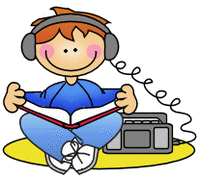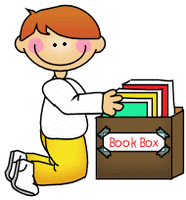
State Learning Standards
Your child will be asked to work on a variety of different skills throughout the school year. Below is a list of skills according to the new Ohio State Standards that we will be working on accomplishing this Kindergarten school year.
English Language Arts
Literature (fiction) and Informational Text (non-fiction):
· With prompting and support:
o Ask and answer questions about a reading selection
o Identify characters, setting and main events in a story
o Retell stories, including details
Foundational Skills:
· Print concepts (left to right, top to bottom, page by page)
· Recognize and name all uppercase and lowercase letters
· Recognize that spoken words are made up of syllable and sounds
· Recognize and produce rhyming words
· Say the most frequent sounds for each consonant and vowel
· Read common high frequency word by sight
Writing:
· Draw, tell or write about a book
· Draw, tell or write about events in the order they happened
Speaking and Listening:
· Participate in discussions
o Listen to others
o Take turns speaking
· Follow oral directions
· Ask and answer questions
· Describe people, places, things and event, providing details
Language:
· Print many uppercase and lowercase letters
· Use capitalization, punctuation, and spelling
· Identify new meaning for familiar words
Science
Earth and Space: Daily and Seasonal Changes
· This topics focuses on observing, exploring, describing and comparing weather changes, patterns in the sky and changing seasons.
Physical: Properties of Everyday Objects and Materials
· This topic focuses on the production of sound and on observing, exploring, describing and comparing properties of objects and materials with which the student is familiar.
Life: Physical and Behavioral Traits of Living Things
· This topic focuses on observing, exploring, describing and comparing living things in Ohio
Social Studies
History: Historical Thinking and Heritage
· Time can be measured.
· Personal history can be shared through stories and pictures.
· Heritage is reflected through the arts, customs, traditions, family celebrations and language.
Geography: Spatial Thinking and Human Systems
· Terms related to direction and distance, as well as symbols and landmarks, can be used to talk about familiar places.
· Models and maps represent places.
· Humans depend on and impact the physical environment in order to supply food, clothing and shelter.
· Individuals are unique but share common characteristics of multiple groups.
Government: Civic Participation, Rules and Laws
· Individuals have shared responsibilities toward the achievement of common goals in homes, schools and communities.
· The purpose of rules and authority figures is to provide order, security, and safety in the home, school and community.
Economics: Scarcity, Production and Consumption
· People have many wants and make decisions to satisfy those wants. These decisions impact others.
· Goods are objects that can satisfy people’s wants. Services are actions that can satisfy people’s wants.
Math
Counting and Cardinality:
· Know number names and the count sequence
· Count to tell the number of objects
· Compare numbers
Operations and Algebraic Thinking:
· Understand addition as putting together. adding to
· Understand subtraction as taking apart and taking from
Number and Operations in Base Ten:
· Work with numbers 11-19 to gain foundations for place value
Measurement and Data:
· Describe and compare measurable attributes
· Classify and count the number of objects in each category
Geometry:
· Identify and describe shapes
· Analyze, compare, create and compose shapes
The Daily 5 Program
Read to Self:
The best way to become a better reader is by practicing each day, with books the students choose and are a "Good Fit".
Work on Writing
Just like reading, the best way to become a better writer is by practicing writing each day.
Read to Someone
Partner reading allows for more time to practice strategies, helping to build fluency, check for understanding, hear their own voice and time to share in this learning community.
Word Work
Expanded vocabulary and correct spelling allow for more fluent reading and writing thus speeding up the ability to comprehend what is read and get thinking down on paper.
Listen to Reading
Hearing good examples of literature and fluent reading expands your vocabulary, builds stamina and helps you become a better reader.
I PICK "Good Fit Books"
The students are taught from day one about choosing and selecting books that are just right for their reading level. They are called "Good Fit Books".
1. I pick a book
2. Purpose (What's my purpose for choosing this book? )
3. Interest (Does this book interest me?)
4. Comprehend (Can I comprehend what I'm reading?)
5. Know (Do I know most of the words?)
Three Ways to Read a Book
1. Read the pictures
2. Read the words
3. Retell the story
Check for Understanding
This is a comprehension strategy that teaches children to stop frequently and check, or monitor, if they understand what they are reading.
Often as beginning readers, children are so aware of reading accurately that they forget to take time and think about what they are reading, checking to see if they understand the text. Advanced readers can develop the habit of reading through the text without monitoring if they were aware of Checking for Understanding as beginning readers.
This vital strategy is not only one of the first we introduce, but is also one we model frequently throughout the year.
When students are Reading to Someone, one partner holds a wooden or foam shape check mark. This helps them to remember their job of listening and retelling what their partner just read. Then they switch, the other student reads as their buddy holds the check mark and this time they "check for understanding".
Bag of Books
Each student will have their very own bag of books. Each bag has a student's number sticker on the front so they can find their books easily and put back on the counter in order after each part of Daily 5. Their bag of books contains "Good Fit Books" they have chosen and their Writer's Notebook with a pencil for Work on Writing. I let my class "Shop for Books" each Friday morning. They LOVE this part and they can't wait to choose new books each week. This builds a sense of responsibility and provides these young readers a way to monitor their own reading abilities.
Building Stamina
Many parents are amazed to hear their child speak about building "stamina". It's not a typical word you hear first graders say! When we begin teaching The Daily 5 parts, the first time we model, instruct, and demonstrate how to do this skill, the students start on their own for 3 minutes. Every day we add one minute, eventually building their stamina to 30 minutes. Some days we may only get to do 20-30 minutes depending on special activities, assemblies, or holiday events. The students "build stamina" for each of the Daily 5 parts.
What's the teacher doing during Daily 5?
Explicit modeling, practice, reflecting and refining takes place during the launching phase, preparing the foundation for a year of meaningful content and instruction tailored to meet the unique needs of each child. After weeks and months of modeling, practicing, and building stamina for each Daily 5 part, the students become very independent and are on "automatic pilot". They know these routines, they look forward to them each day. In fact, they are disappointed if we don't get to all five if there is something special in our day. This automaticity allows the teacher to work with students one on one, in Skills Groups, or Guided Reading. The teacher can give assessments such as DRA's (Developmental Reading Assessment), or DIBELS (Dynamic Indicators of Basic Early Literacy Skills) tests. Teachers can confer with students individually to discuss how they are developing as readers and writers and discuss their goals.
The Daily 5 book by Gail Boushey and Joan Mosher:
Teachers can click the link below for The Sisters Daily 5 web page. There you will find an endless supply of information and details about this phenomenal program! It really works!! Parents are welcome to visit too!


Perhaps you are wondering about how writing develops and why, perhaps, your child is bringing home papers with temporary spellings that haven’t been corrected. Remember when your child first learned to talk? S/he may have many “mistakes” or approximations in their speech, but it didn’t really concern you that much. At times you may have corrected their speech, but mostly you included your child in your conversations, encouraged them to talk, and delighted in your interactions with them. As parents, you know that children learn to talk the same way they learn to crawl or walk…They learn to talk by talking. Learning to write works the same way. Here is an example of writing in the early years.
"IFAGDFDA"
Now this may not look like standard writing, but it is an approximation and it is AMAZING! It tells us a lot. This shows that this child knows that written language is supposed to mean something, and the child can explain exactly what it means. When asked, we are told:
"I have a goldfish called Adam"
Just about every letter stands for one word in the story.
I F A GDF D A
I have a goldfish called Adam
Some additional developmental stages come before this one, and others come after. From this
sample we see that child knows the following:
-Print goes in a straight line from left to right.
-Print is made up of letters
-Letters stand for sounds in the words s/he wants to write.
Later we might see:
"I FNDA LPANDA GENE CAMOT"
I found a lamp and a genie came out
Here is what this WONDERFUL piece of writing tells us about the child’s writing development.
-Written language is made up of words and separated by spaces.
-Written words are made up of a number of different letters.
-Written words have beginning and ending sounds.
-Written words have vowels.
-When you know a word “AND” you spell it the same way every time.
By the end of the year, we hope to see:
"My frarit prt of the clasrom is the libare bekus it has Books. And we lrn how to red. I like it."
Teachers help children learn to write the way parents and families help them to learn to talk. If we put our energy and focus into correcting each and every approximation, the child will get discouraged and lose a natural desire to write. What research tells us about heavy correction is that meaning is less important than spelling the words correctly. If we invite them to use their oral language in their writing, even if they can’t spell all the words correctly, we give them the freedom to say what they mean. Children learn to write by writing. When we support and applaud their “best attempts” we see their writing take off. Do we have a time to teach spelling, grammar, punctuation, and handwriting? Absolutely! We do this during our whole group instruction, small group instruction, and individual conferences. We select one or two teaching points that are within their writing development and support them as they take on this new skill. My goal in sharing my thoughts with you is to encourage you to share in your child’s joy of writing. Kindergarten is an amazing year of growth for writers. The skills will come with time. Just remember… We learn to write by writing!
Kindergarten Writing
